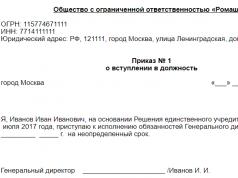Ticks are active during the period when there is young growing grass in a pasture, meadow, or clearing. The best place Their habitat is considered to be forest litter or the remains of broad-leaved plants, for example, forage crops such as rapeseed and legumes. In frosty or dry, hot weather, the tick freezes, but at the first opportunity it becomes active. Ticks are found on goats visiting places where grass grows in the south of the Russian Federation as early as February. The second peak of insect activity occurs in the fall. In wooded areas, with sufficient moisture, ticks are active throughout the grazing season.
Maliciousness
Insects injure the skin and transmit contagion. Conflicting information comes from different sources about tick-borne encephalitis in goats, which is dangerous to humans. Clinical manifestations This pathology is absent in ruminants, but there is a possibility of excretion of the virus in milk for 8 days after a tick attack.


Methods of protection
The following are ways to protect goats from ticks:
- stall housing;
- pasture selection;
- extermination of ticks on grass;
- elimination of arthropods on goats;
- use of repellents.
Stall housing
In areas where there is a massive increase in tick activity in the spring, an effective measure to prevent invasion is to extend the stall season. At this time, the grass is still not suitable for goats to eat: its height does not allow them to capture food, and excessive moisture can cause digestive upset. When the plants reach a height sufficient for grazing, dry weather most often sets in, during which mites are not active. This technique is in demand in the southern regions, with hot and dry summers, but is unacceptable for wooded or taiga areas, where high humidity, and, consequently, insect activity persists throughout the grazing season. In this case, a tick attack should be expected from the leaves of low bushes.
Pasture selection
It is known that ticks require special conditions- abundance of moisture, as well as decaying remains of broad-leaved plants. If the pasture is dominated by cereals, it is located far from fields where broad-leaved forage plants are grown - clover, alfalfa, rapeseed and others, then the likelihood of encountering a tick is low.

Destruction of ticks on grass
This method is acceptable if goats are grazed in a limited area. During the period when ticks are active, the vegetation is treated with pesticides that are harmful to arthropods, but safe for herbivores when ingested. It must be taken into account that such preparations are destructive for bees; when rainwater flows from the treated area into ponds or rivers, fish may die. The event is carried out, according to the instructions, in calm, dry weather. Once the treated vegetation dries, it becomes safe for the ruminants that eat it, and the pesticide becomes insoluble in rainwater.
Destruction of ticks on a goat
To protect goats from ticks medical supplies are not suitable because most of them will be retained by the hair and will not reach the skin, and also for financial reasons.
After mechanical collection of insects, goats are treated with acaricidal agents, which will be discussed in more detail below.
Application of repellents

- Destructive emulsions. Developed based on the following compounds with insecticidal activity:
- FOS;
- pyrethroids;
- tsifoks, tsiperil;
- fipronil insecticides.
FOS
There are a lot of drugs that can be used to treat goats against ticks. When choosing them, you should pay attention to the restrictions on their use. Thus, many products are contraindicated for pregnant goats. The most famous are Dichlorvos, Diazinon, Blotik. When using last drug milk cannot be used for food for a day, meat - for two weeks.
Pyrethroids
The largest family of insecticidal drugs. They are designed to kill insects on the skin of animals, protect against their attacks, and can be used to treat pasture areas. The most famous are Neostomazan, Butox. Tsifoks, Entomazan. Manufacturers issue instructions for use, which are common to most drugs; they differ in dosage, as well as withdrawal periods. Thus, when irrigating goats with Entomazan C, the milk can be used for food starting from the second milking. The penalty for meat is 10 days.

Fipronil insecticides
Special insecticides based on this compound are not in demand for goats, but it is allowed to kill ticks with such means, for example, Bars spray.
Everyone knows that serious in its severity viral infection carried by ixodid ticks. Additional reservoirs for the pathogen are tick feeders: wild and domestic animals, birds, rodents. Infection of people can occur not only through tick bites. There is another route of spread, which involves infection through the digestive system.
Nutritional route of transmission of tick-borne encephalitis
The main source of infection during the disease can be domestic animals (goats, cows, sheep). This route of spread of encephalitis is called food or nutritional. During the period of viremia, which occurs in an infected animal, the pathogen enters the milk, and then penetrates into the milk with unboiled milk or cheese. human body.
How is tick-borne encephalitis transmitted through milk?

The virus enters the human body through the digestive and gastrointestinal tract after eating raw milk, it is fixed there in epithelial cells and fabrics. Then through the capillaries it enters the circulatory system, multiplies in the blood vessels and leukocytes. From there it migrates to the organs immune system, is being implemented in internal organs where its replication occurs. Subsequently, damage to the central nervous system develops. So the connection goat milk and tick-borne encephalitis is obvious. The role of infected cows is much less due to the short duration of viremia, but this possibility must also be remembered.
What to do to avoid contracting encephalitis through goat's milk
The causative agent of the pathology is destroyed in hot milk at a temperature of 60 ° C after 20 minutes. Stored at 37°C for 2 days. Boiling for 2 minutes is enough to inactivate it. Therefore, you should only consume boiled or pasteurized milk. Such simple preventive measures are enough to avoid contracting encephalitis through food.

To reduce the likelihood of tick attacks on domestic animals, it is necessary to create unfavorable conditions for their habitat: clear the territory, mow the grass, remove last year's leaves, carry out deratization measures (fight rodents). Dairy goats and it is advisable to graze cows on specially designated cultivated pastures. If they are absent, you need to inspect animals returning from grazing every day for the presence of attached ticks.
The nutritional route of infection is of secondary importance for preservation in environment tick-borne encephalitis virus, but characterizes the intensity of the epizootic process.

- Go to section: Domestic goat: all about maintenance
- Go to section: Goat diseases and their treatment
Flies and ticks on goats
Flies serve as a good indicator: when there are especially many of them around a goat, it means the animal is not healthy. Flies and ticks. In the hot summer, various flies terribly bother goats both in the pasture and in the barn, and especially if there are any abrasions or wounds. Flies lay their testicles under the root of the tail (if goats suffer from diarrhea) or in other places (where there are wounds), mainly attacking young animals. You can protect goats from these insects by lubricating those places where flies are more likely to land with tar or fish oil, adding to them deer antler oil or ASD-2.
Ticks usually appear on goats grazing on sparse forest pastures or feeding on hay from peat meadows. Ticks live on goats all year round, accumulating mainly near the larynx, where they pierce the skin and suck blood, causing unbearable pain. The damage they cause in wool goat breeding is extremely great. It is very difficult to get rid of them; the most reliable remedy is shearing, then you should wash the goat with tobacco (400 g per 1200 g of water) or moisten it with a three percent creolin solution. Manure from such goats must be disinfected.
Bad habits of goats.
Between bad habits goats, in addition to self-milking, which was mentioned above, the following should be noted.
Knocking over a bucket of swill in order to quickly get to the tastier sediment at the bottom is observed quite often among goats. Once the goat starts doing this bucket overturning, it is impossible to wean it off; The only way is to stand with her constantly until she drinks, or to give her something to drink from a flat container. It should be noted that goats that are often free are much calmer in the barn than those that are constantly tied.
Being tied for a long time, goats strive in every possible way to gain freedom and for this purpose help one another to free themselves from the chain or rope. The owner must keep this tendency in mind, since once a goat is freed, it will always strive to leave.
Horned goats often butt the walls of the barn and tear off the feeders, so it is advisable to cover the walls with boards and tie the feeders to the ceiling with ropes.
Arachno-entomosis (diseases caused by mites and insects)
Scabies- a skin disease that causes itching, causing animals to scratch the affected areas. Depending on the type of pathogen, scabies can be:
a) cutaneous (psorptosis), most often affects the back, neck,
sacrum, shoulders;
b) pruritic, or headache (acorosis), affects the scalp;
c) skin beetle, or legworm (charyoptosis), affects the skin of the legs (more often
rear).
Infection with scabies occurs through contact of sick animals with healthy ones, as well as through pastures, premises, equipment, inventory, service personnel who had contact with sick goats. Signs: redness of the skin, formation of nodules, crusts and scabs, hair loss, itching. Treatment: treating the affected areas of the skin with emulsions or bathing goats (preferably shorn) in baths (solution of creolin activated with hexochlorane, hexochlorane-creoline emulsion, etc.); injection of the drug avermectin, etc.
Prevention: disinfestation of premises, equipment, care items, cessation of the use of pastures where sick goats were grazed for 3-4 weeks.
Tick-borne encephalitis. In the northern regions, animals can be affected by ticks, which are carriers of diseases such as tularemia, fever and tick-borne encephalitis humans and animals. After each grazing, goats in areas where there are problems with ticks are checked for the presence of red-brown and silver insects on the body in the head, neck, shoulders, groin and breast area. Tick-borne encephalitis initially manifests itself in uncoordinated movements of the forelimbs, and within 1-2 days it develops into general paralysis, after which respiratory arrest may occur. If a tick is found, it is removed using a burning match. As soon as the tick feels the warmth, it will crawl out of the animal’s skin on its own. You should not pull the tick, as its head can come off and remain in the animal’s body, causing a number of complications.
Scratches and scratches and loss of hair by animals is a sign of the presence of lice, which can be easily detected in the fur of animals on the side, groin, and shoulders. The blood-sucking louse is very large, has a dark blue color and can grow up to a length of 0.3 cm. The biting louse is smaller and its color is paler. Animals can be treated with medications used to combat scabies. When treating with insecticides, be careful with pregnant goats, as the drugs can cause abortions in them. When using powdered insecticides, dust the animals' back, neck and area around the tail. Repeated treatment is carried out 17 days after the first, the third - 17 days after the second.
As prevention To combat the disease, it is necessary to graze animals in dry areas, prevent watering from puddles and small sewage ponds, use a penned grazing system, etc.
For treatment give phenothiosine at a dose of 1 g per goat mixed with feed salt (1 part phenothiosine to 9 parts salt) or with the daily norm of concentrated feed. Apply an aqueous solution of iodine (1 g of crystalline iodine, 1.5 g of potassium iodide per 1500 ml of distilled water) c. dose: for adult goats - 10-12 ml, for kids - 5-8 ml intratracheally. Dytrozine is also effective in the form of 25% aqueous solution(subcutaneous or intramuscular).
Treatment consists of trepanning the skull and removing the bladder or puncturing it and suctioning out the fluid in it. After death, the head or the entire corpse of the animal is buried in the ground.
For preventive purposes, herding dogs are periodically dewormed.
Treatment animals - immunization and use of medications.
Basic preventive measure in the fight against this disease is the systematic (every 5 days) bathing of all animals in baths with an arsenic solution to destroy ticks from the animals’ bodies.
Scabies of goats. Depending on the type of pathogen, scabies can be:
1) cutaneous (psorptosis), most often affects the back, neck, sacrum, shoulders;
2) itchy or headache (acorosis), affects the scalp;
3) skin beetle or foot (charyoptosis), affects the skin of the legs (usually the hind legs).
Symptoms of the disease: redness of the skin, formation of nodules, crusts, scabs, hair loss, itching.
Treatment: treating the affected areas with emulsions or bathing goats (preferably shorn) in baths (solution of creolin activated with hexachlorane, hexachlorane-creolin emulsion, etc.), injection of the drug avermectin, etc.
Animals are treated against ticks with powders (hexachlorane dust - 6-12%, picochlorane - 0.1% emulsion). To do this, the hair on the affected and adjacent areas is cut off. The cut areas are washed with warm water and soap. Remove crusts and scales by scraping them with a wooden knife; Powder is applied to the skin of the animal, taking precautions so that the drug does not get on the mucous membranes of the eyes and respiratory tract. For treatment, one treatment is sufficient, sometimes the treatment is repeated after 10 days. Soap is low toxic for animals.
Tick-borne encephalitis. In northern regions, animals can be affected by ticks, which are carriers of diseases such as tularemia, Q fever and tick-borne encephalitis in humans and animals.
Tick-borne encephalitis initially manifests itself in uncoordinated movements of the forelimbs, and within 1-2 days the disease progresses to general paralysis, after which respiratory arrest may occur.
If a tick is found on the body, it is removed using a burning match. As soon as the tick feels warmth, it crawls out of the animal’s skin on its own. You should not pull the tick, as its head can come off and remain in the animal’s body, causing a number of complications.
Estrosis (gadfly disease). Inflammation of the mucous membrane of the nasal cavity, passing into the frontal and cranial sinuses. In goats affected by botfly larvae, rhinitis is observed, mucus is discharged from the nose, and in kids, it is often mixed with blood. Crusts of dried blood form around the nostrils. Animals often sneeze, shake their heads, rub their noses on the ground or other objects, keep their heads on their sides, and spin around in place.
For treatment Avermectin can be used.
Signs of the presence of lice in an animal are scratches and scratches, loss of hair, detection of lice in the fur of animals, on the side, in the groin, on the shoulders. Blood-sucking lice are very large, have a dark blue color and can grow up to a length of 0.3 cm. The biting louse is smaller and its color is paler.
Treatment. Animals are treated with medications used to combat scabies.
Vibriosis and chlamydial abortions. Diseases that have approximately the same symptoms. During the last two months before goats goats abort. If abortions of vibriosis origin are established, the goats are urgently transferred to an uninfected area, the aborted fetuses are destroyed, and the queens are treated with antibiotics (penicillin, streptomycin).
For prevention diseases of goats can be vaccinated before and after mating.
Ringworm (trichophytosis). Fungal disease skin, manifesting itself in the form of coin-like spots on the head, ears, and around the eyes. A damp and polluted environment predisposes to the disease.
Treatment. Individual animals are treated by removing flakes of affected skin from remote areas and treating them with 10% alcohol solution iodine or other fungicidal drugs daily from the onset of the disease until recovery. To prevent scratching of the affected areas, iodine is mixed with glycerin, which softens the skin.








